As HMRC continues to move forward with Making Tax Digital (MTD), we felt it would be useful to update you on the current deadlines and requirements on your business.
The first requirements fall on VAT registered businesses. If your taxable turnover is above the VAT registration threshold you must follow the rules set out in the latest HMRC MTD notice which can be found here. This will fundamentally change the way businesses interact with HMRC and file their VAT returns from 1 April 2019.
HMRC’s notice states that Making Tax Digital for VAT requires VAT registered businesses with taxable turnover above the VAT registration threshold to keep records in digital form and file their VAT Returns using software.
Under Making Tax Digital, the software which businesses use must be capable of keeping and maintaining the records specified in the regulations, preparing their VAT Returns using the information maintained in those digital records and communicating with HMRC digitally via our Application Programming Interface (API) platform.
If your digital records are up to date, software will be able to collate and prepare your return for you. It will then show the return to you and ask you to declare that it is correct and confirm that you want to submit it to HMRC. Once you have submitted your return you will receive confirmation through your software that it has been received.
Functional Compatible Software
HMRC state that ‘functional compatible software’ is a software program, or set of software programs, products or applications, that must be able to:
- record and preserve digital records
- provide to HMRC information and returns from data held in those digital records by using the API platform
- receive information from HMRC via the API platform
HMRC expects that there will be software products available that will perform all of the functions listed above. Some software programs will not be able to perform all of these functions by themselves. For example, a spreadsheet or other software product that is capable of recording and preserving digital records may not be able to perform the other 2 functions listed above, but can still be a component of functional compatible software if it is used in conjunction with one or more programs that do perform those functions.
The complete set of digital records to meet Making Tax Digital requirements does not all have to be held in one place or in one program. Digital records can be kept in a range of compatible digital formats. Taken together, these form the digital records for the VAT registered entity.
Helpfully, HMRC sets out some examples of when MTD may start for your company:
Example 1 – Existing business with taxable turnover above the VAT registration threshold on 1 April 2019
A business submits a quarterly return covering the period 1 March to 31 May 2019. The business taxable turnover exceeds the VAT registration threshold and therefore the business will need to comply with Making Tax Digital rules for the period starting 1 June 2019.
Example 2 – Business with a taxable turnover above the Making Tax Digital threshold at the point they need to register for VAT
A business that is not registered for VAT is required to register from September 2019 because the taxable turnover over the previous 12 months has exceeded the VAT registration threshold. The business must follow the rules in this notice for all VAT Returns they are subsequently required to make as their taxable turnover was above the VAT threshold when they were required to register.
Example 3 – VAT registered business with taxable turnover below Making Tax Digital threshold until November 2019
A business is registered for VAT but its taxable turnover is below the VAT registration threshold until November 2019. The business must follow the rules in this notice for any VAT period that starts on or after 1 December 2019 as its taxable turnover now exceeds the VAT registration threshold.
Digital Record-keeping
According to the HMRC guidance, all VAT registered businesses must keep and preserve certain records and accounts. Under Making Tax Digital, some of these records must be kept digitally within functional compatible software. Records that are not specified in this notice, or that are not required to complete your VAT Return, do not need to be kept in functional compatible software.
Some software will record all your VAT records and accounts information. However, there are some records that by law must be kept and preserved in their original form either for VAT purposes or other tax purposes. For example, you must still keep a C79 (import VAT certificate) in its original form.
Example 1
A business receives an invoice and types selected data contained in the invoice into functional compatible software. They must still keep the invoice in its original form as the data in the functional compatible software is not a copy of the invoice.
Example 2
A business has functional compatible software that scans the invoices received and puts the information in its ledger. If the image is retained and contains all the detail required for VAT purposes then the business does not need to keep the original invoice unless it is required for another purpose.
If you deregister from VAT you will no longer need to keep digital records in functional compatible software, but you must retain your VAT records for the required period.
VAT Calculations Made Outside of Software
HMRC recognises that there may be points during preparation of your VAT Return when calculations will have to be made outside of any software you use to keep the digital records, or there may be a need to enter data into your software from particular sources.
For example, a capital goods scheme adjustment calculation done in a separate spreadsheet may need some form of input by hand into the software that will send your VAT Return information to HMRC.
Submission of information to HMRC
The submission of information to HMRC must always be via an Application Programming Interface (API). While HMRC expects most businesses to use API-enabled commercial software packages both to keep digital records and file their VAT Returns, the following alternatives may be available:
Bridging software
This is a digital tool (incorporating relevant Making Tax Digital APIs) that is used to connect accounting software to HMRC systems, and allows the required VAT information to be reported digitally to HMRC, and for information to be sent digitally back to the business from HMRC.
API-enabled spreadsheets
These are spreadsheets that incorporate relevant Making Tax Digital APIs. They can either combine with accounting software to submit the required VAT information digitally to HMRC, and allow information to be sent back to the business digitally from HMRC or be used to keep digital records and then directly submit the required VAT information digitally to HMRC
Summary
In summary, HMRC are:
- introducing mandatory digital records;
- requiring an API to connect to HMRC and file the VAT returns electronically; and
- specifying digital links between the accounting system and any spreadsheets used to prepare the VAT return.
HMRC have now accepted that there will be some instances where VAT calculations may have to be made outside any software. This is a concession from their original position that all adjustments must be digitally linked. They also seem to have accepted that businesses will need different options for recording irrecoverable VAT in their systems (including recording an initial amount and adjusting at quarter end).
If you fall under the requirements for this stage of MTD, we would strongly advise you to start to consider how you need to prepare for the introduction of MTD, including both how you will link with HMRC, and how you will keep, and digitally link the VAT records which you are required to keep.
Get in touch to discuss how to implement a cloud accounting package for your business and to understand some of the various app integrations available, many of which we will be reviewing over the course of the next few months in our newsletters.

